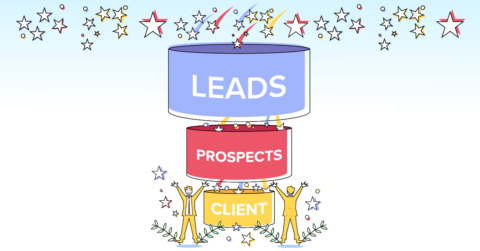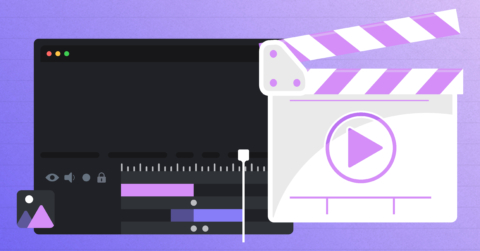
The Donor Experience And How To Improve It
10/19/23
digital donor
Every nonprofit can benefit from an improved donor experience. Spend the time optimizing the entire process and you will stand out among other organizations. This leads to a happier audience and, down the line, more donations.
Today we are talking about what exactly the donor experience entails. We will also share some actionable tips you can implement right away to improve the donor experience overall.
The Donor Experience: What It Is And Why It’s Important
The “donor experience” refers to the journey that donors take when engaging with a charitable organization. This includes every interaction: from the first touchpoint of discovering your organization to a donor’s ongoing relationship with the nonprofit.
Essentially, it is the sum total of all the encounters and emotions a donor has while interacting with you.
The quality of your donor experience is important to improve for two reasons:
- It is all-encompassing. There’s nothing too big or too small to be considered in a donor experience. Looked at this way, a donor experience has the power to make or break your organization’s fundraising success.
- The organizations that spend the time improving their donor experience set themselves up for success. Nobody wants to donate if their interactions with an organization leave them feeling confused, overwhelmed, or unappreciated.
With this in mind, here are some tips for improving your donor experience.
How To Improve the Donor Experience
1) Create Engaging Content
Good content is foundational for just about any organization. Content is how you get people interested in your cause in the first place. Done right, it’s also how you make people feel an emotional connection to your organization – and donate more.
This is why content marketing is so important for the donor experience. Each time they interact with your organization is an opportunity to educate them about your cause. This is what will get people coming back for more, and increases the likelihood of a donation in the first place.
As for the kind of content you create? Most important is that it resonates with your audience. What do they care about? This is the first question you should be asking as you look for content topics. Once you have the subject material down, get to work creating it. This can include impactful stories, success testimonials, or anything else that demonstrates the real-world change your nonprofit is driving.
2) Improve The Online Experience
Most of the donor experience will take place online. Sure, there are in-person events people might attend, as well physical mail you can send to them. However, by and large, the donor experience is going to happen on a screen. If you don’t optimize a donor’s online experience, you are simply leaving money on the table.
So – where to start? Be sure to follow some of the best practices for website design. Only when you do can you ensure that your audience is actually having a positive experience. This means that you create a flow that users go through when interacting with your website. This will leave them with a positive impression of your brand. The result? They take you seriously and are able to more deeply connect with your cause. At this point, a donation is much more likely.
3) Implement Personalized Communication
We have mentioned the importance of segmentation numerous times. And for good reason – no matter what you do, your audience responds better to more personalized communication. A person wants to feel like they’re more than just a number. This is true for any customer, but even more so for an individual that donates their hard-earned money. If you want an effective donor experience that delights, segmentation is how you do it.
The first action you can take is to implement simple merge tags. These are wonderful if you implement email marketing (and you should). Because merge tags allow you to include a person’s name in your emails, the reader will always feel like you are speaking directly to them. You might also consider having your audience “self sort” what they are interested in hearing about. This can make for much more personalized content that your audience is practically guaranteed to be interested in.
But it doesn’t stop there. It’s equally important to acknowledge what donors have already done. If somebody has donated far more than others, for example, you should call this to attention. Not only does this show donors you really are talking directly to them – but it demonstrates your appreciation. Which brings me to our last point…
4) Express Gratitude
A nonprofit is dependent on donors. Indeed, their contributions are what make a nonprofit’s actions possible. Without their funds, an organization simply can’t function. Simply put, a donor wants to know that these donations are appreciated. It’s your job to ensure that they do.
While there are a ton of different ways to express this appreciation, you don’t need to get too fancy. A simple ‘thank you’ goes a long way. And if you do want to do more? Consider sending handwritten notes or even creating personalized thank-you videos to genuinely express your gratitude. Your donors are guaranteed to appreciate it.
Our Favorite Tool For a Superior Donor Experience
Looking for a tool guaranteed to improve the donor experience? Here is what we recommend:
This is a tool designed to engage with donors and increase your total revenue. Here are just a few features that make FundraiseUp so valuable:
- Campaign Pages: Raise more with optimized donation pages designed to maximize giving
- Elements: A fundraising UI kit for your website that makes it easy to create engaging calls to action
- Machine Learning: AI-powered optimizations that right-ask amounts and intelligently upgrade donors
Ready to improve your donor experience and increase total donations?
Click here to check out FundraiseUp.
…
Are you an enterprise, nonprofit or small business looking for help on your website? Give us a shout! We provide a free consultation. Email us at info@lughstudio.com or call us at (718) 855-1919!









